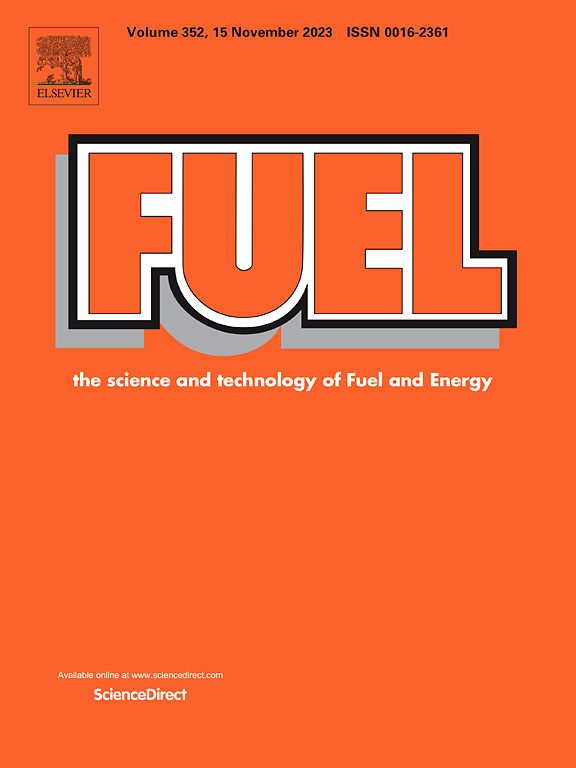考虑膜降解的质子交换膜燃料电池动态耦合特性分析及多约束优化
IF 7.5
1区 工程技术
Q2 ENERGY & FUELS
引用次数: 0
摘要
变负荷下质子交换膜燃料电池(PEMFC)系统的性能退化是制约其应用可靠性和经济性的关键问题。本研究开发了一个集成的“热力学-经济”多物理耦合框架,量化热、电、气和液体之间的跨尺度相互作用。为解决传统电学模型的局限性,建立了多物理场动态模型,揭示了运行参数(负载电流、温度、阳极加湿)与系统性能指标(膜含水量、系统净功率、电热效率、运行成本)之间的动态耦合特性。提出了一种结合卷积神经网络(CNN)和多目标粒子群优化(MOPSO)的多约束优化框架,以实现多约束下热力性能(净功率提高8.91%)和经济目标(成本降低3.63%)的pareto最优解。CNN组件从多物理场模拟中提取高维特征相关性,而MOPSO确保全局搜索效率。此外,通过将电导率衰减机制嵌入到多物理场框架中,建立了一个基于物理的膜降解模型,从而可以对优化前后的降解轨迹进行定量比较。结果表明,通过参数阈值调节,该框架显著减缓了膜的降解(运行991 h时电导率衰减优化10.26%)。最后,讨论了多约束优化策略和考虑膜降解对提高PEMFC系统整体性能的有效性。这项工作为PEMFC控制策略建立了关键的理论边界,并为耐久性系统设计提供了一种数据机制融合方法,展示了下一代长寿命燃料电池技术的潜力。本文章由计算机程序翻译,如有差异,请以英文原文为准。
Analysis of dynamic coupling characteristics and multi-constraint optimization of a proton exchange membrane fuel cell considering membrane degradation
The performance degradation of the Proton Exchange Membrane Fuel Cell (PEMFC) system under variable loads is a key issue that restricts the application reliability and economy. This study develops an integrated “thermodynamics − economy” multi-physics coupling framework that quantifies cross-scale interactions among thermal, electrical, gas, and liquid. To resolve the limitations of conventional electrical models, a multi physics field dynamic model is established, revealing dynamic coupling characteristics between operational parameters (load current, temperature, anode humidification) and system performance indicators (membrane water content, system net power, electro-thermal efficiency, operational costs). A multi constraint optimization framework combining Convolutional Neural Network (CNN) and Multi Objective Particle Swarm Optimization (MOPSO) is proposed to achieve Pareto-optimal solutions for thermodynamic performance (8.91 % net power enhancement) and economic targets (3.63 % cost reduction) under multiple constraints. The CNN component extracts high-dimensional feature correlations from multi-physics simulations, while the MOPSO ensures global search efficiency. Furthermore, a physics-informed membrane degradation model is developed by embedding conductivity decay mechanisms into the multi-physics framework, enabling quantitative comparison of degradation trajectories before/after optimization. The results show that the proposed framework significantly slows membrane degradation (the attenuation of conductivity during 991 h operation was optimized by 10.26 %) through parameter threshold regulation. Finally, the effectiveness of the multi constraint optimization strategy and consideration of membrane degradation in improving the overall performance of the PEMFC system were discussed. This work establishes critical theoretical boundaries for the PEMFC control strategies and provides a data-mechanism fusion methodology for durability system design, demonstrating potential for next-generation long-life fuel cell technologies.
求助全文
通过发布文献求助,成功后即可免费获取论文全文。
去求助
来源期刊

Fuel
工程技术-工程:化工
CiteScore
12.80
自引率
20.30%
发文量
3506
审稿时长
64 days
期刊介绍:
The exploration of energy sources remains a critical matter of study. For the past nine decades, fuel has consistently held the forefront in primary research efforts within the field of energy science. This area of investigation encompasses a wide range of subjects, with a particular emphasis on emerging concerns like environmental factors and pollution.
 求助内容:
求助内容: 应助结果提醒方式:
应助结果提醒方式:


